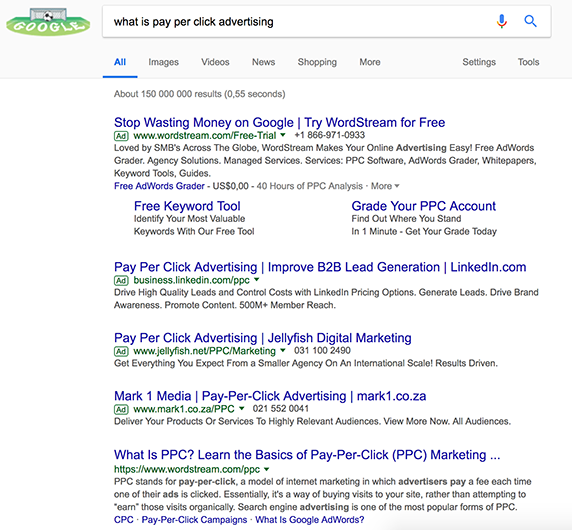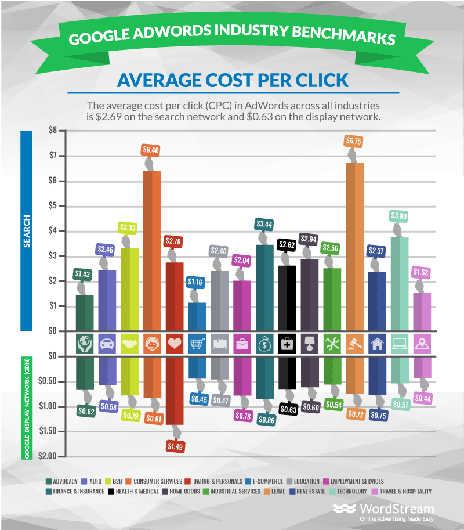5 Reasons Small Businesses Should Use PPC Advertising

5 Reasons Small Businesses Should Use PPC Advertising
A full 45% of small businesses invest in pay-per-click advertising. Here are five key benefits to including PPC ads in your marketing mix.
As a small business, your marketing budget is precious. In turn, most owners are apprehensive to approach new marketing initiatives.
A recent report found that 45% of small businesses are investing in pay-per-click (PPC) advertising. Among small businesses with more than 50 employees, 74% are investing in PPC advertising.
PPC advertising is a cost-effective way to drive traffic to your website, regardless of your budget. As the name suggests, you only pay the publisher when your ad is clicked. Ad prices are set by bidding, which allows you to be flexible with your ad spend. And unlike many other marketing strategies, PPC allows you to reach and engage your target audience with ease.
Today we outline five ways your small businesses will benefit from using PPC ads:
- Reach your audience
- Develop brand awareness
- Convert buyers
- Drive profit
- Refine and optimize campaigns with ease
1. Reach Your Target Audience
Given the abundance of online ad space, PPC is a targeted and effective way to reach consumers. PPC networks give you access to a plethora of targeting factors like demographics, location, keyword usage, and time of day. The ability to cast a wide net with precision can lead to remarkable returns at cost.
For example, many businesses benefit from targeting local customers in search of nearby goods and services. According to Think with Google, 75% of online shoppers who find local information in search results helpful are more likely to visit stores.

PPC advertisers also benefit from advanced targeting and marketing techniques:
Retargeting: Also called remarketing, this allows you to serve targeted search ads to people who’ve already visited your website or app. Once leads enter the marketing funnel, each subsequent interaction with your brand increases the likelihood of a purchase. Retargeting keeps your brand top of mind with interested parties and motivates them to deepen the relationship.
Display campaigns: These let you personalize and serve ads to people on websites related to your product or service. When someone who's already visited your site visits a site in the Google Display Network, your ad will appear in the site’s sidebar or footer. Whether your aim exposure or conversions, you can engage your leads with relevant material in their line of site.
2. Develop Brand Awareness
While search engine optimization (SEO) can take months, PPC provides instant visibility to a relevant audience. Seen below, paid ads from Google Adwords occupy the top slots of the first-page organic search results.

According to WordStream, 41% of all clicks go to the top three paid ads on search results pages. Prospects have entry-level questions, so serve ads that can win attention and introduce your brand.
For example, you might leverage your best blogs to spark interest and generate leads. Seen above, the headline and meta-tag of the ad should feature a value proposition that newcomers will find relevant.
But won’t customers recognize these as ads? Findings vary, but between 36-50% of consumers fail to differentiate between paid ads and organic content at the top of Google search results pages. This elevates your brand name to prominence while enhancing your authority in the industry. Even with individuals who recognize your paid ad, you’re billboarding your business and increasing its exposure.
3. Convert Your Buyers
Leads in the late stages of your marketing funnel aren’t looking for resources, they’re looking for results. These would-be customers are inclined to click on ads that promise such a solution. In fact, WordStream found that paid ads get 65% of all clicks from people looking to buy now.
Capitalize on purchase intent by bidding on search terms that target buyers. For example, add words like “buy,” “get,” and “purchase” to your product keywords. Similarly, try out less obvious phrases like “best price,” “cheapest” and “who sells.” For optimal results, link these ads directly to your products page or – depending on the keyboard – a specific product.
4. Drive Profit
PPC offers a high return on investment (ROI) compared to other forms of marketing. Since you can limit the expenditure by click, you’re in complete control of your ad spend. But before you can drive results with PPC ads, you must identify which search terms will generate a profit for your business.
The price of a keyword (search term) varies from $1.16 per click to nearly $7 per click, by industry. According to WordStream, the average price per click is $2.69 on the Google search network and $0.63 on the Google display network.

To calculate a budget for your PPC ad campaign, you’ll need to know the price-per-click of your search terms.
Tools like SEMRush give you both the price of a search term and the search volume per term. If you need help identifying search terms relevant to your business, use the Google Keyword Planner.
Once you know the price for a search term, your budget will depend on how many clicks that term receives in a month. Here’s a formula:
Keyword volume * average click-through rate (CTR) for your industry = clicks per month
Say a keyword costs $2.50 per click and you calculate the clicks per month at 40. The monthly cost for that keyword will be $100.
Next, find the monthly cost of each keyword in your PPC strategy. Here’s the formula:
Clicks per month * cost per click = monthly cost per keyword
Now you’re able to calculate the entire budget for your PPC campaign. This allows you to pinpoint which search terms are profitable, manage your expenses, and track your performance.
5. Refine and Optimize with Ease
PPC's low-cost and quick results lets you take an iterative approach to PPC campaigns. Run a campaign for a couple weeks, then refer to your tracking tools to monitor and refine the impact of your PPC campaign. Tools like Google Analytics, Google Adwords, and WordStream provide detailed reports that identify and detail which paid ads are performing best.
Linking your Google Analytics to Google Adwords lets you see which ads are converting to leads, page views, sales, or sign-ups. From here, you can run tests on specific landing pages and web page copy to determine what’s most effective. This closed loop of insights to application makes it easy to continuously improve your advertising strategy.
Why Should Small Businesses Use PPC?
As you stretch to align your marketing goals with your budget, you’ll appreciate both the impact and the efficiency of PPC advertising.
The pricing model can accommodate any budget, while the reach and targeting capabilities make PPC a flexible way to achieve any objective.
